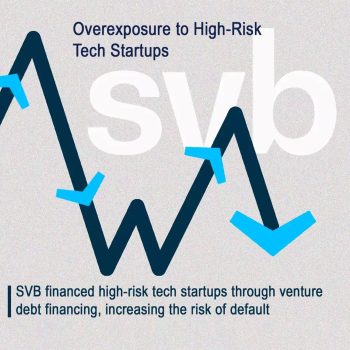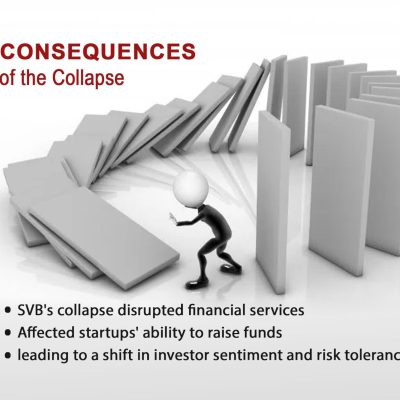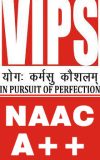
How and Why Silicon Valley Bank (SVB) Unexpectedly Collapsed
Silicon Valley Bank (SVB) Unexpectedly collapsed on 10th March 2023 sending shockwaves through the world and raising questions about the stability of the financial system. SVB was a prominent financial institution that provided banking and financial services to the technology and startup ecosystem. The bank was established in 1983 and had a long-standing reputation for financing high-growth, high-risk companies. SVB played a critical role in supporting the growth of the tech industry and was an essential partner for many entrepreneurs and investors.
Reasons Behind The Collapse
SVB collapsed because of its aggressive investment strategy in high-risk, high-yield hold-to-maturity securities and its substantial exposure to Non-performing loans (NPLs). The bank, seeking higher returns, had to invest in illiquid and speculative assets that ultimately led to massive losses. Additionally, many of the bank’s clients were tech startups, which inherently carried a higher risk of default.
Another significant factor in SVB’s downfall was the loss of depositor confidence. Rumours of the bank’s financial troubles led to a panic, with depositors rushing to withdraw their money, causing a bank run. The bank was unable to withstand the sudden outflow of funds, leading to its eventual collapse.
Overexposure to High-Risk Tech Startups
SVB’s business model was built on financing high-risk tech startups through venture debt financing. Venture debt financing involves lending money to startups with the expectation of receiving a return on investment in the future. However, this model carries significant risks as startups have a high likelihood of failure, and if they do fail, they may not have sufficient assets to repay their debts.
SVB’s lending practices and criteria were also an issue. The bank had a history of providing loans to companies with high valuations but limited revenue, which increased the risk of default. Additionally, the bank had a high concentration of loans to a small number of clients, further increasing the risk of default.

Economic Downturn and Its Impact on the Tech Sector
The Economic Downturn or Recession in 2022 had a severe impact on the tech sector, resulting in market volatility and a decline in valuations. This affected SVB’s loan portfolio as the bank’s clients were struggling to raise funds and were defaulting on their loans.
Regulatory Scrutiny and Failures
Regulatory agencies play a crucial role in ensuring the stability of the financial system. In the case of SVB, regulatory agencies failed to identify red flags and missed warning signs of the bank’s impending collapse.
The Federal Deposit Insurance Corporation (FDIC) is an independent agency of the US government that protects depositors against the loss of their insured deposits if an FDIC-insured bank or savings association fails. It stepped in to protect US depositors by transferring all deposits and certain assets from the failed bank to another financial institution. This swift action helped prevent the collapse from causing widespread panic and further instability in the financial system.
Mismanagement and Lack of Internal Controls
SVB also had issues with mismanagement and a lack of internal controls. The bank had corporate governance issues and ineffective risk management practices, which contributed to the bank’s collapse.
Consequences of the Collapse
The immediate consequences of SVB’s collapse were felt by the bank’s clients. Many accounts were frozen, disrupting financial services, and affecting startups’ ability to raise funds. Some startups had to resort to laying off employees or shutting down their operations entirely due to the lack of capital.
The collapse of SVB also had a risk of contagion, which could have had potential spillover effects on the global financial markets and the economy. It had a significant impact on the tech industry and venture capital landscape. The reduced access to capital for new startups resulted in a shift in investor sentiment and risk tolerance, making it more difficult for new companies to raise funds.
SVB’s Collapse also highlights the need for startups and entrepreneurs to carefully evaluate their financing options and avoid overreliance on debt financing. While debt financing can provide short-term capital, it can also increase the risk of default and financial instability.
Banks need to adopt more stringent lending practices and criteria to reduce the risks associated with high-risk lending. Banks must be transparent and accountable in their decision-making processes and have effective risk management practices in place to ensure the stability of the financial system.

Lessons learned & Future Implications

Recently, a US firm “First Citizens” acquired Silicon Valley Bank after its collapse, including its loans and deposits from the Federal Deposit Insurance Corporation (FDIC). This news has caused concern in the banking and financial sector, highlighting the importance of better bank supervision and regulation to prevent such incidents. The bank’s collapse has impacted the startup ecosystem by making it harder and more expensive for startups to obtain loans. The acquisition by First Citizens may bring stability and better loan opportunities for startups. The incident emphasizes the need for stronger bank regulation and supervision, as stated by the Federal Reserve Chair. The acquisition raises questions about the future of both the banking and startup ecosystems and highlights the need for better regulation to prevent similar incidents from happening again.
The collapse has called into question the sustainability of the startup ecosystem, leading to increased scrutiny of startups’ financials and business models. The Indian startup ecosystem, which heavily relied on SVB for funding, has also been affected, raising concerns about the future growth and success of Indian tech startups and about the health of other banks that have similarly high exposure to risky assets and NPLs. The tech industry is now experiencing a credit crunch as funding for startups becomes scarier and more expensive.
Silicon Valley Bank’s Collapse serves as a cautionary tale for the tech industry and the financial sector. As the global financial market grapples with the aftermath of this event, banks, regulators, and the tech industry need to learn from this experience and adopt more prudent strategies to ensure a stable and sustainable financial ecosystem by strengthening regulatory oversight, and promoting responsible banking and risk management practices.

